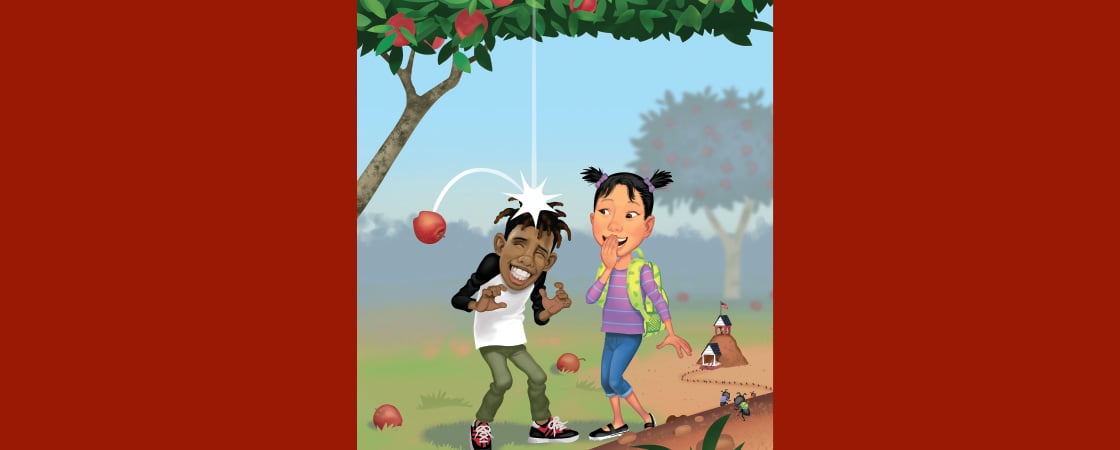Underneath an apple tree
one lovely day in autumn
a friend walked up to talk with me,
and then an apple got him.
It dropped and bonked him on the head,
which would have made me bawl.
But he just laughed and winked and said,
“That apple likes the fall.”

